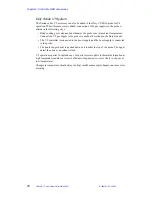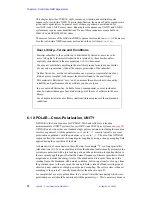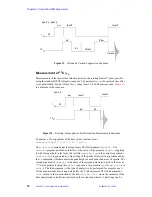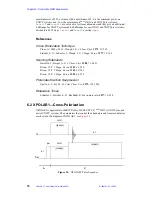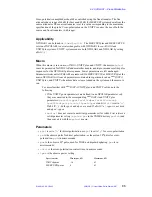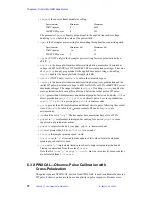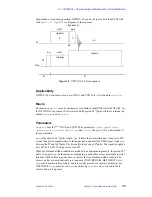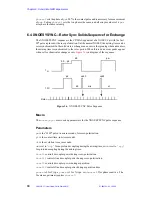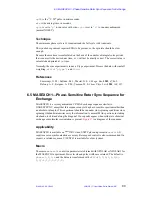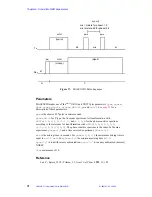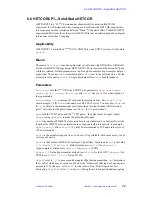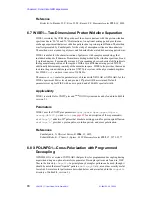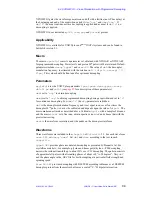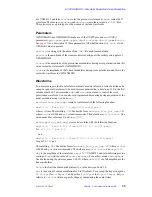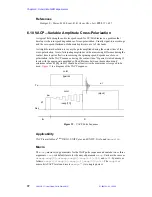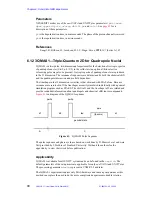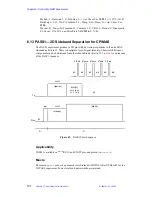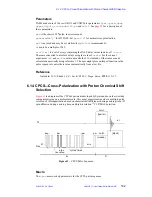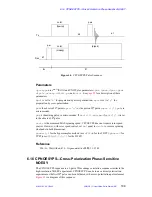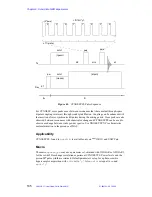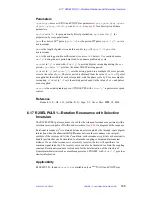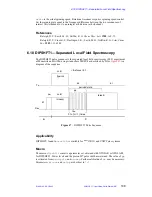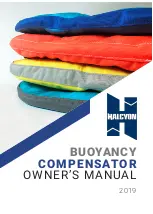
Chapter 6. Solid-State NMR Experiments
93
VNMR 6.1C User Guide: Solid-State NMR
01-999162-00 C0402
Reference
Bielecki, A.; Burum, D. P.; Rice, D. M.; Karasz, F. E. Macromolecules 1991, 24, 4820.
6.7 WISE1—Two-Dimensional Proton Wideline Separation
WISE1 correlates the CP/MAS spectrum of the observe nucleus with the proton wideline
spectrum due to
1
H–
1
H and X–
1
H interactions. An optional mixing period provides an
exchange experiment that mixes wideline patterns due to proton spin diffusion. The method
was first presented by Zumbulyadis for the study of amorphous silicon semiconductors.
The method was extended to polymers, and Schmidt-Rohr et al added a mixing period was.
WISE1 is useful for the characterization of polymers with complex morphology that
includes hard and soft domains. Domains are distinguished by the wideline spectrum, broad
if rigid and narrow if motionally averaged. Corresponding observe chemical shifts indicate
the segmental composition of the regions. With a spin diffusion mixing period WISE1
additionally determines proximity of the domains in space. WISE1 also provides the means
to obtain the proton wideline spectrum a UNITYplus system with only a standard digitizer.
For WISE1,
sw1
can be set in excess of 100 kHz.
The macro
wise1
converts a parameter set, obtained with XPOLAR or XPOLAR1, for the
WISE experiment. Power levels and proton 90
°
pulse width are retained. Default
parameters set up for WISE with no mix period and a 200-kHz spectral width.
Applicability
WISE1 is available for UNITYplus and
UNITY
INOVA systems and can be found in SolidsLib
version 2.1.
Parameters
WISE1 uses the UNITYplus parameters,
tpwr
,
tpwrm
,
dpwr
,
cppwr
,
dipolr
,
crossp
,
dblv12
,
pw
and
cntct
(see
for a description of these parameters).
mixflag='y'
adds two 90
°
pulses that bracket a mixing period for proton spin diffusion.
mixflag='n'
provides a proton pulse, evolution period, and cross polarization.
References
Zumbulyadis, N. Physical Review B 1986, 33, 6495.
Schmidt-Rohr, K.; Clauss, J.; Spiess, H. W. Macromolecules 1992, 25, 3273–3277
6.8 XPOLWFG1—Cross-Polarization with Programmed
Decoupling
XPOLWFG1 is a version of XPOLAR1 that provides for programmed decoupling during
acquisition using an optional waveform generator. Decoupler patterns are found in .DEC
files in the directory
shapelib
. In principle any decoupler pattern can be used, though it
should be noted that most “liquids” patterns,
waltz
,
xy32
, etc., are not necessarily useful
for solids. Several useful patterns are described below and are included in the
shapelib
directory of SolidsLib, version 2.1.

